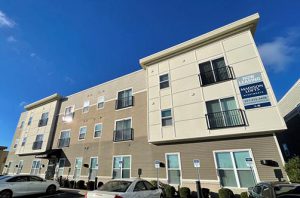Key Internet Terms
Key internet terms updated to 2021 standards
INTERNET SERVICE PROVIDER (ISP)
This is the company that provides your connection to the internet. They offer various plans and packages, each with different features, speeds, and prices.
MODEM
A modem is a device that connects your computer or router to the internet. It converts the data from your computer into a format that can be transmitted over a telephone or cable line.
ROUTER
A router is a device that connects multiple devices to the internet and manages the traffic between them. It creates a local network in your home or office, and assigns IP addresses to each device.
IP ADDRESS
This is a unique identifier assigned to each device connected to the internet. There are two types of IP addresses: IPv4 and IPv6. IPv4 addresses are composed of four numbers, while IPv6 addresses are composed of eight groups of hexadecimal digits.
DNS SERVER
The Domain Name System (DNS) is a system that translates domain names (such as www.google.com) into IP addresses (such as 172.217.12.46). A DNS server is a computer that provides this translation service.
WIRELESS NETWORK
A wireless network allows devices to connect to the internet without the need for cables or wires. Wi-Fi is a common type of wireless network, and most modern devices support it.
SSID
SSID stands for Service Set Identifier. It is the name of a wireless network that devices use to identify and connect to it. When setting up a wireless network, you can choose any name you like for your SSID.
PASSWORD/PASSPHRASE
A password or passphrase is a secret code that you use to secure your network and prevent unauthorized access. It should be a strong and complex combination of letters, numbers, and symbols.
BANDWIDTH
Bandwidth refers to the maximum amount of data that can be transmitted over a network connection in a given amount of time. It is usually measured in megabits per second (Mbps) or gigabits per second (Gbps).
UPLOAD SPEED/DOWNLOAD SPEED
Upload speed refers to the speed at which data can be sent from your device to the internet, while download speed refers to the speed at which data can be received from the internet to your device.
Outdoor Antenna CPE:
This stands for Customer Premises Equipment, and refers to the equipment that is installed at a customer’s location to connect to an outdoor antenna. This equipment typically includes a radio transmitter/receiver, a power supply, and an antenna.
POE Brick:
This stands for Power Over Ethernet Brick, and refers to a device that provides power to other devices over an Ethernet cable. The POE Brick is typically connected to a power source and a network switch, and can provide power to devices such as cameras, access points, and VoIP phones.
CAT Cable:
This stands for Category Cable, and refers to a type of twisted pair cable used for Ethernet networks. The most common types of CAT cable are CAT5, CAT5e, CAT6, and CAT7. These cables have different specifications for bandwidth, speed, and distance, and are used to connect devices to a network.
WAN Port:
This stands for Wide Area Network Port, and refers to a port on a network device (such as a router or modem) that is used to connect to a wide area network such as the internet. The WAN port is typically connected to a modem or other internet gateway device.
LAN Port:
This stands for Local Area Network Port, and refers to a port on a network device that is used to connect to a local area network. The LAN port is typically used to connect devices such as computers, printers, and servers to a network.
Before contacting tech support, try power cycling your devices (turning them off and then back on again). This can resolve many common internet issues and may save you time and frustration when troubleshooting.
DIAL-UP ACCESS TELEPHONE NUMBER
This is the telephone number your modem will automatically dial to connect to the Internet.
LOGIN NAME (USERNAME)
This is the name you enter to login to your SLIP or PPP account. This can normally be up to eight characters and case DOES count. i.e. Lucas is different from lucas and LUCAS.





